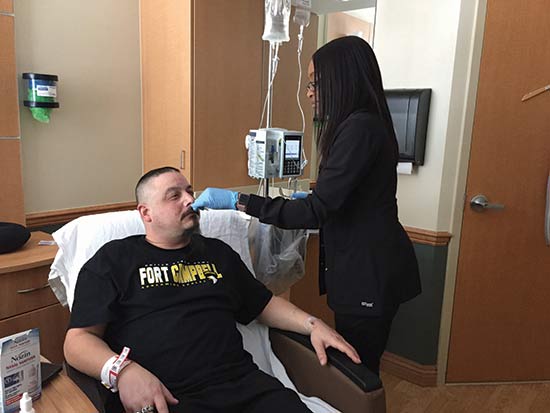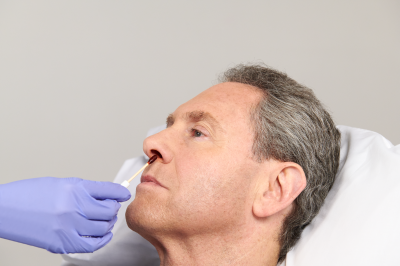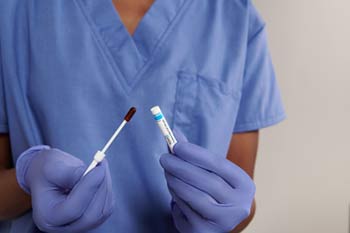Alternatives to the standard mupirocin treatment are beginning to gain traction.
 ON THE NOSE It's generally agreed that preoperative nasal decolonization helps prevent SSIs, but the most effective method is still a matter of debate. (Note: Photo taken before the COVID-19 pandemic).
ON THE NOSE It's generally agreed that preoperative nasal decolonization helps prevent SSIs, but the most effective method is still a matter of debate. (Note: Photo taken before the COVID-19 pandemic).
Nasal decolonization is a cost-effective way to reduce the risk of surgical site infections (SSIs), especially in patients undergoing joint replacement surgery. Infected joints can be expensive to treat and devastating for patients. The infection itself could be serious; the implant needs to be removed and replaced; and the end result might be suboptimal. That's why it's vital to employ nasal decolonization before surgery to treat Staphylococcus aureus (S. aureus) in the nares, a common cause of infection in joint replacement patients.
But which method should you use? There are currently three primary options from which to choose, all of which have some peer-reviewed data that indicates they're effective, says Edward Septimus, MD, an infectious disease specialist and professor of internal medicine at Texas A&M College of Medicine in Houston. Consider the following points when deciding which method to use for your patients:
- Mupirocin. The classic treatment involves testing the nares for the presence of methicillin-resistant Staphylococcus aureus (MRSA) and methicillin-resistant Staphylococcus aureus (MSSA) before patients arrive for surgery. If either organism is present, the patient applies mupirocin to the anterior nares two times a day for five days leading up to surgery, in conjunction with daily chlorhexidine bathing. The challenge with mupirocin is that it requires screening patients at least a week in advance of their procedures, and then patients need to strictly follow the application regimen at home. Widespread use also contributes to the increasing prevalence of mupirocin resistance.
- Povidone-iodine (PI). This topical antiseptic is applied in pre-op on the day of surgery — two applications in each nostril twice before the patient goes into the OR — so you don't need to worry about screening patients days in advance of their procedures. The evidence of PI's effectiveness in reducing SSIs is growing, and its simple application method makes it an appealing option in outpatient surgery settings.
- Alcohol-based antiseptic. This method is short in duration and therefore must be applied multiple times a day to lower colony counts in the nares. Although significant clinical evidence is lacking on the overall efficacy of alcohol-based nasal decolonization, it's a viable and convenient option for use on patients in pre-op.
"The problem right now is a lack of consensus on what the most effective and reliable nasal decolonization regimen actually is," says Dr. Septimus. "Given the limited peer-reviewed information on the true efficacy of the mupirocin alternatives, it's too early to say which is the best. The nasal decolonization picture will likely become clearer in the next couple of years."
.svg?sfvrsn=be606e78_3)



.svg?sfvrsn=56b2f850_5)